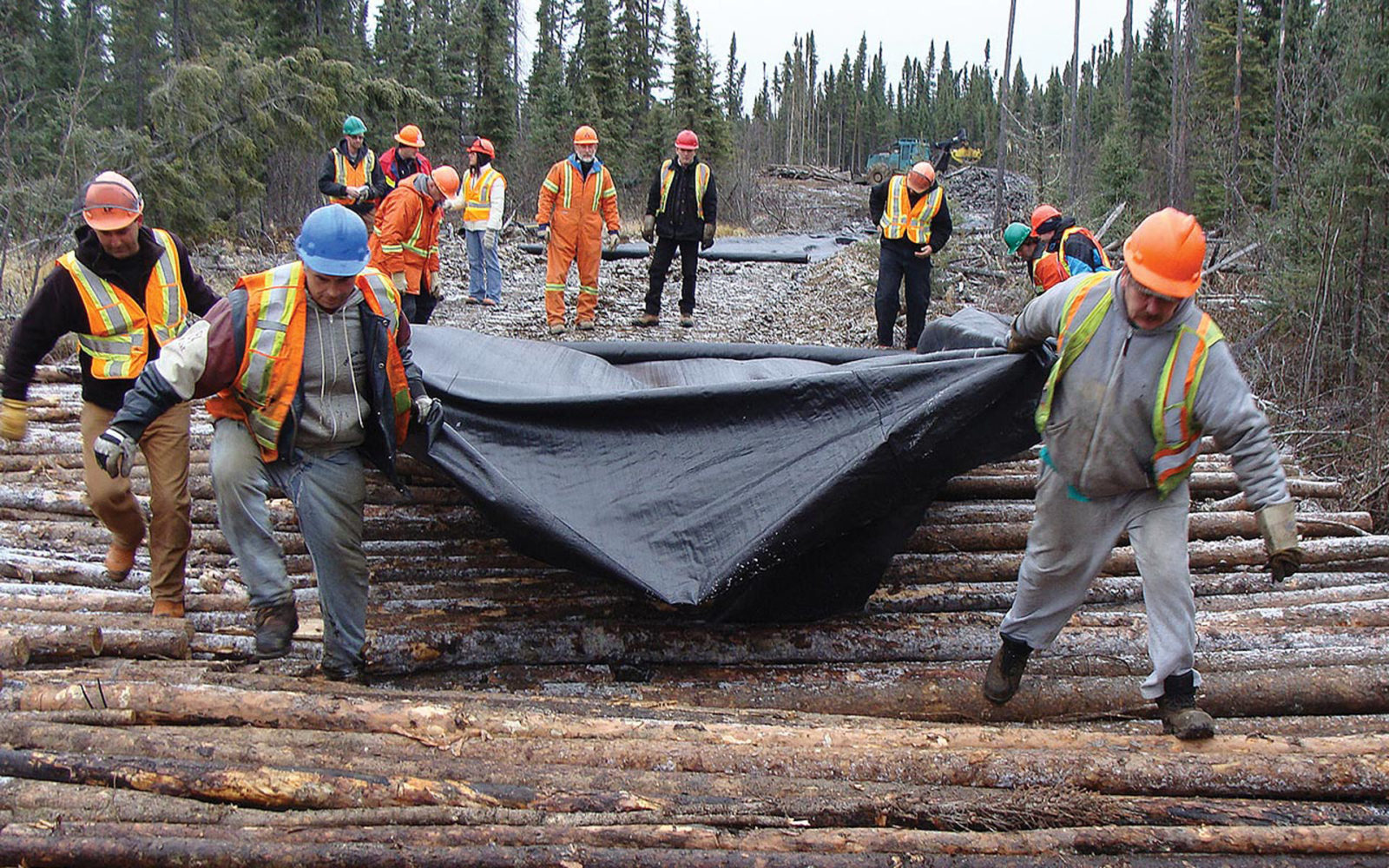Reinventing Corduroy Roads

Icy water swells up around Chris Smith’s boots with each step as he walks across the thawing muskeg. It’s a bit like walking on a saturated sponge—one that covers huge swathes of Canada’s vast boreal forest.
It’s May 2010 and Smith, Ducks Unlimited Canada’s head of boreal conservation programs, is looking at the bog lining Highway 10, on the “Northern Woods and Water Route” in northern Manitoba. It’s easy to see how it got its name.
“That drive is stunning,” says Smith. “You’re totally surrounded by wetlands.”
But Smith explains the highway has changed these wetlands. Vegetation looks different on either side. It blocks the natural flow of water – and the nutrients it carries. Small forestry roads in the boreal behave the same way.
These crossings can only hold back water for so long. Culverts freeze over in the winter so roads wash away in spring. It can be a colossal headache for foresters.
So, when the Sustainable Forestry Initiative Inc.® (SFI) made funding available, DUC and its forestry partners jumped at the chance to learn how to make better ones. That’s why Smith is here. He and the partners are touring this rugged area seeking a solution in sustainable development.
They meet Tim Chotka, a forest planner for Spruce Products Ltd., who has worked in the bush for 37 years. He talks about roads out to Red Deer Lake that have been built over a row of logs.
“They’ve been logging there for 70-odd years,” says Chotka. “We’re still using that old corduroy road. They just laid it on top of the muskeg. You can see, the corduroy is there, it’s just covered in moss now, and it’s still not rotting.”
Since the early days of Canada’s timber trade, foresters have used corduroy roads. By laying logs down side by side (giving the appearance of corduroy fabric) they built paths over wet areas, allowing the water to flow through.
“I’ve got islands of trees, but they’re big islands, and instead of being surrounded by water they’re surrounded by bogs, swamps, marshes and fens,” says Chotka. These corduroy roads have been his solution. He brings the group to a section he’s built.
With the wealth of wetlands, forestry and engineering knowledge in the group, it doesn’t take long for ideas to start flowing. How could this ancient technique help keep the water moving? How could we apply our expertise on how that water moves?
After much learning and many field trips discovering how to cross and conserve wetlands, DUC and its forestry partners decided to reinvent the humble corduroy road. First, they determine what kind of wetland they’re working with. Water in bogs is stagnant. In swamps, it fluctuates. It’s a slow trickle in fens.
Depending how the water flows, they add culverts and geotextile fabric to give the road more strength or support. They keep the root mat, stumps and all, intact. More geotextile is used to prevent dirt from plugging the corduroy or entering the water.
“It’s almost like a suspended road,” says Chotka. “As long as water’s flowing through, we’re not damaging things, and as long as I can get to my islands of woods we can keep logging.”
In 2014, the partners produced a guide for foresters to build better wetland crossings in the boreal. It helps them classify wetlands and contains construction schematics for each type. Armed with this information foresters can access their woods and leave the wetlands intact.
“We wanted to keep it simple. We were trying to imitate nature.” —Tim Chotka
“We wanted to keep it simple,” says Chotka. “We were trying to imitate nature.”
This project is all part of DUC’s vision for conservation in the boreal forest—a balance of protected areas and sustainable development across its billion acres. For the working forest, this means using best practices like new road-building techniques.
Now, the partners are taking the project to the next level. With SFI funding, they’re producing a National Handbook on Resource Roads and Wetlands for use across the country.
“Being loggers, the next generation is going to be loggers too,” says Chotka. “You want something there for your children. You want to do it right.”
Supported with funding from the Sustainable Forestry Initiative. Find out more about the Operational Guide for Forest Road Wetland Crossings. Project partners include Louisiana-Pacific Canada, Weyerhaeuser Canada, Spruce Products Ltd. and FPInnovations.
Cutlines:
Construction of a corduroy road in the Canada’s boreal forest.© DUC


